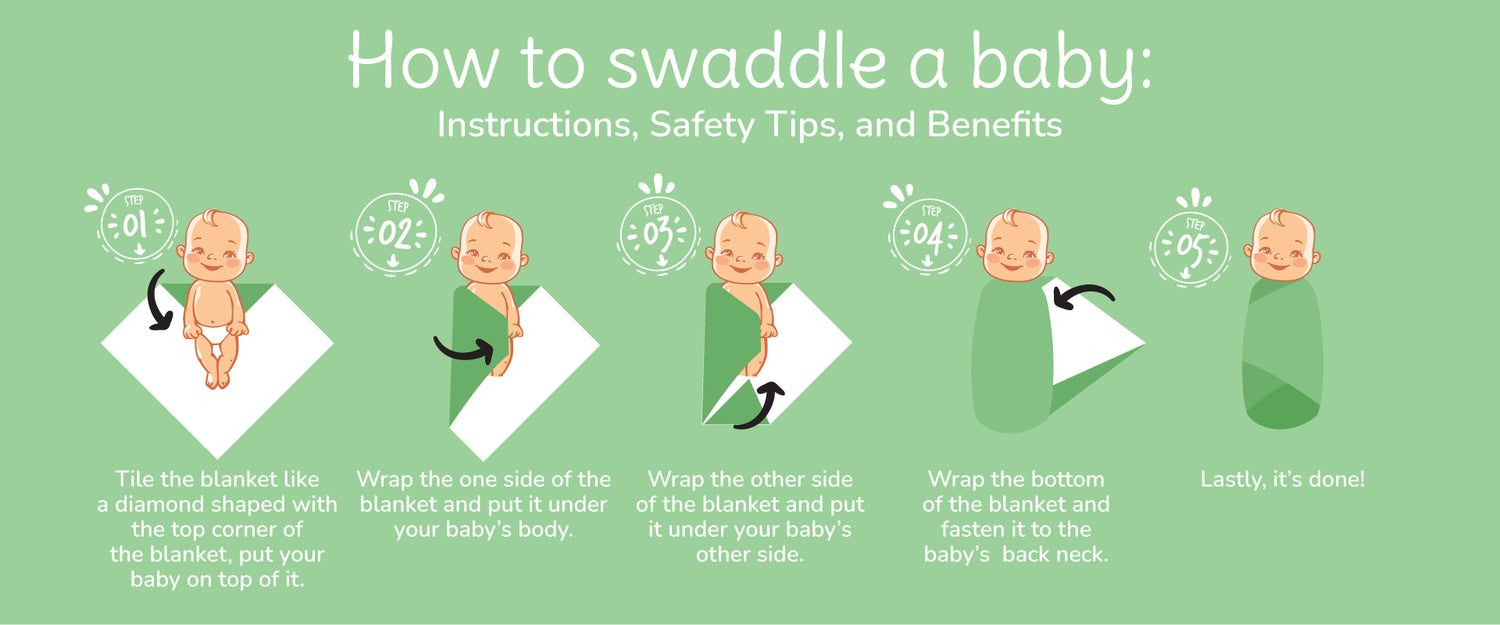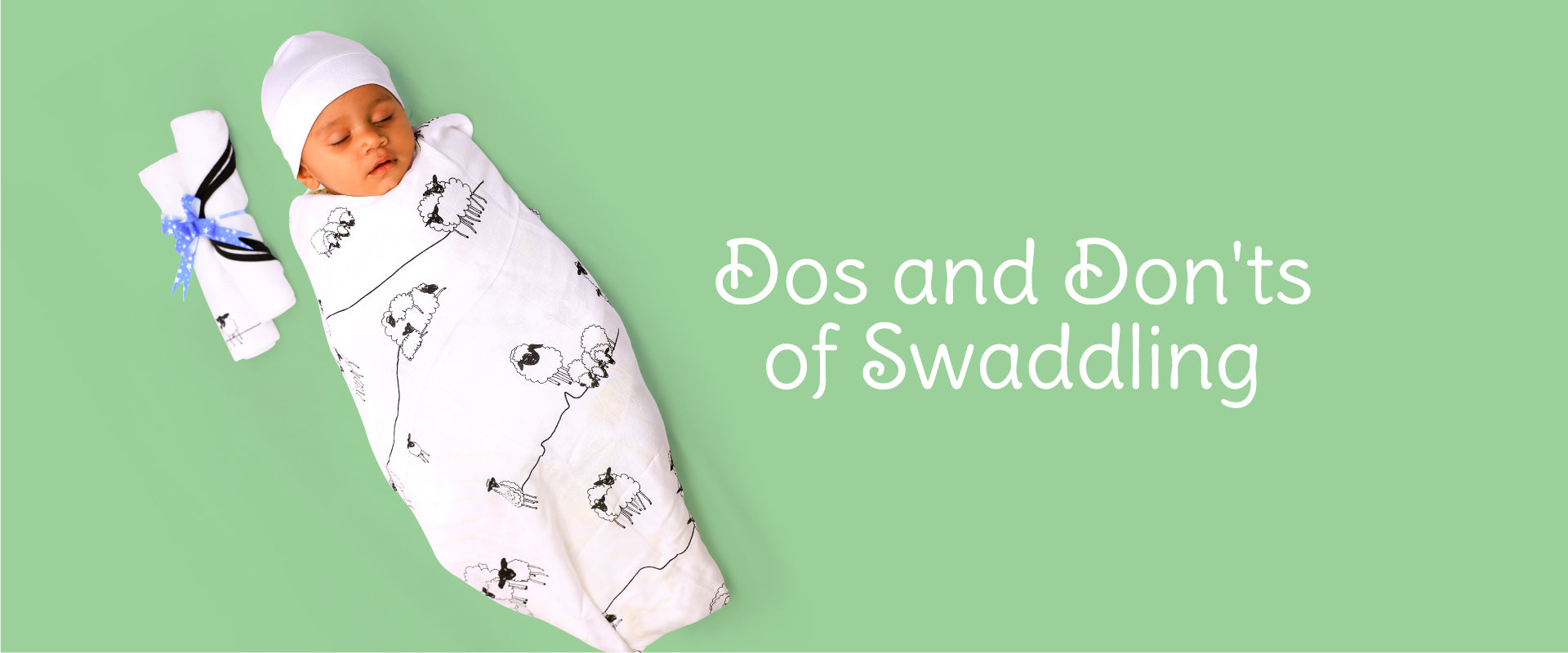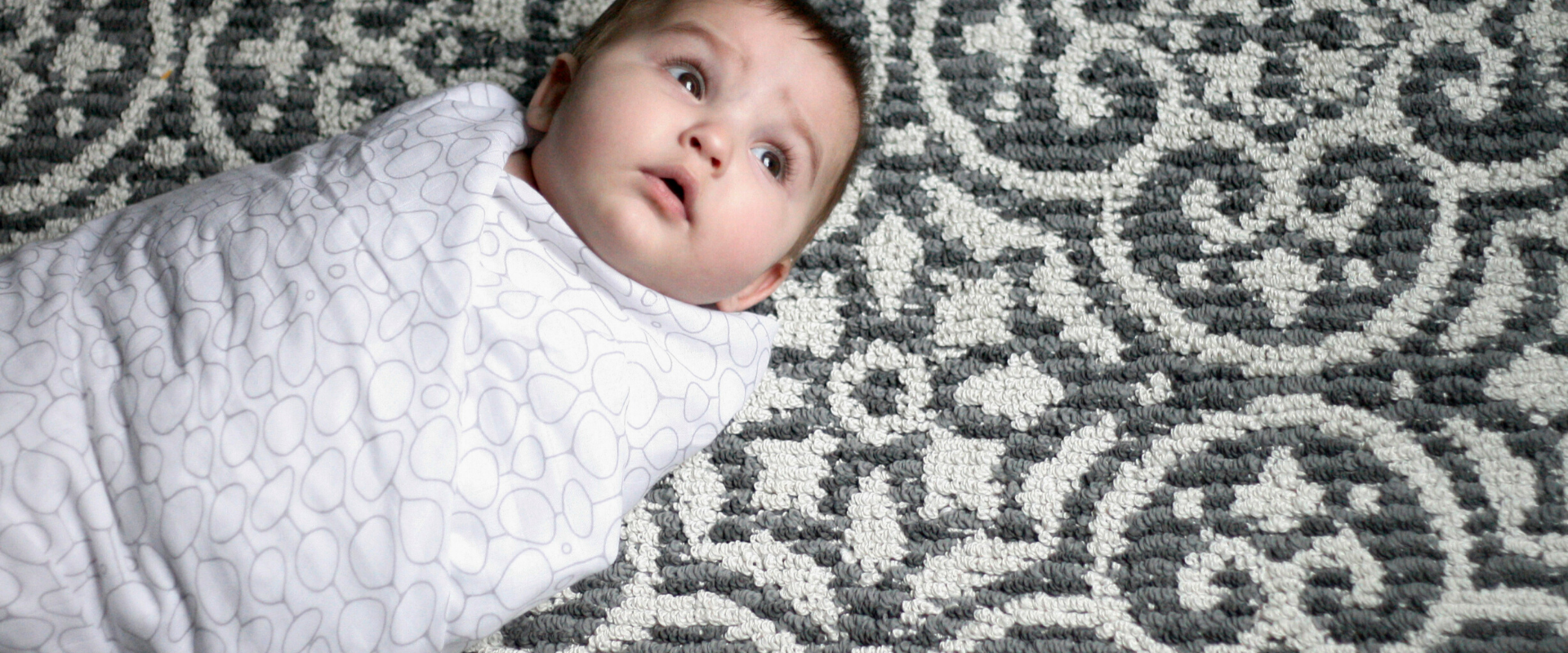Master the magic of swaddling your baby and you just might get a little extra sleep yourself!
The first time your baby visited the hospital nursery, she probably came back wrapped in a neat little package, with only her fuzzy little head poking out. That’s because nurses know one of the secrets to a happy, calm baby: swaddling.
There are lots of good reasons to try this age-old technique — but figuring out how to do it yourself can be a little intimidating (especially when you’re feeling bleary-eyed). Here’s a step-by-step guide to swaddling like a pro, how to make sure you’re doing it safely, and when it’s time to stop.
What Is Swaddling And What Are The Benefits?
Swaddling is an ancient technique for wrapping newborns in a thin blanket or cloth. It’s adorable (who doesn’t love a baby burrito!), but it also serves the all-important purpose of helping your sweet pea stay calm and sleep more soundly. Here are the benefits:
How To Swaddle With A Blanket
Swaddling the right way may seem a little daunting, but wrapping up your baby only takes a few steps. Here’s how to do it:
A few important things to keep in mind: The swaddle should be snug, but not too tight. You should be able to place two to three fingers between your baby’s chest and the blanket, and the blanket should be loose around her hips so she can move her legs freely. Finally, if your baby seems to prefer having her arms free, it’s fine to leave them out of the swaddle.
Chances are you’ll become a swaddling pro in no time. But if you’re feeling unsure, ask your baby’s pediatrician. He or she can check your swaddle skills and share some helpful pointers if you aren’t getting it quite right.
Is Swaddling Safe?
Baby sleep and blankets don’t usually mix, so does that make swaddling dangerous?
It’s true that swaddling isn’t entirely risk-free. But the American Academy of Pediatrics (AAP) says that swaddling can encourage your newborn to snooze better — as long as it’s done correctly and practiced in accordance with other safe sleep guidelines.
Swaddle blankets that are too loose or that come unwrapped during sleep could cover a baby’s face and create the potential for suffocation. The risk is compounded by the fact that swaddled babies tend to sleep extra soundly. So if their face does get covered by a swaddle blanket, they might be less likely to wake up and change positions.
Swaddle blankets that are too snug, especially around your baby’s hips, aren’t good either. Tight swaddles force her legs into an unnaturally straight position that can damage her hips, joints, and cartilage.
To encourage healthy hip development, the bottom of the swaddle should be loose enough for your baby’s legs to stay bent up and out, like they naturally would in a newborn lying on her back without a swaddle.
Swaddling Safety Tips
Safe swaddling will encourage your little one to sleep more soundly while giving you peace of mind (so you can get some sleep yourself!). Some important tips to keep in mind:
- Swaddle snugly, but not too snugly. At the top of the swaddle, you should be able to fit two to three fingers between the blanket and your baby’s chest. The bottom of the swaddle should be loose enough so your baby’s legs stay bent and flared out.
- Always put your baby to sleep on her back. It’s the safest position, whether you’re swaddling or not. Be sure to tuck the bottom of the blanket underneath your baby too.
- Keep your baby cool. Swaddling could cause overheating, which can raise the risk of Sudden Infant Death Syndrome (SIDS). Keep the room at a comfortable temperature (between 68 and 72 degrees F is good year-round). And resist the urge to bundle your baby in extra layers — a pair of pajamas and the swaddle blanket are likely enough to keep her comfy. Sweating, damp hair, flushed cheeks, heat rash, and rapid breathing are all signs that your baby might be too hot.
- Stop swaddling at the right time. It’s time to say goodbye to the swaddle blanket once your baby becomes more active and is trying to roll.
What If The Baby Doesn’t Like Being Swaddled?
Plenty of parents swear that swaddling is key for soothing their newborns. But not every baby is a fan! Some seem to find swaddles restrictive and will try to fight their way free every time. So if getting wrapped up makes your baby more crazed than calm, you don’t have to do it.
Before giving up completely though, you might want to experiment with some alternatives. If your baby seems to want her arms out, try leaving her arms out of the swaddle blanket.
And if none seem to be the right fit? Feel free to move on. There’s no need to force your baby into a swaddle if she doesn’t like it.
When To Stop Swaddling
Swaddling can be a smart move for newborns. But it’s dangerous for older babies who can break free from their blankets.
Being wrapped up can interfere with healthy development for older babies too since it prevents them from practicing age-appropriate motor skills.
So when’s the right time to stop? You’ll want to quit swaddling once your little one becomes more active or tries to roll over, which usually happens around 3 or 4 months.
To play it extra safe, you can stop even sooner. Some experts recommend ending swaddling at 2 months before your baby starts to ramp up her rolling skills.




1 comment
Karen Zavala
Newborn
Newborn